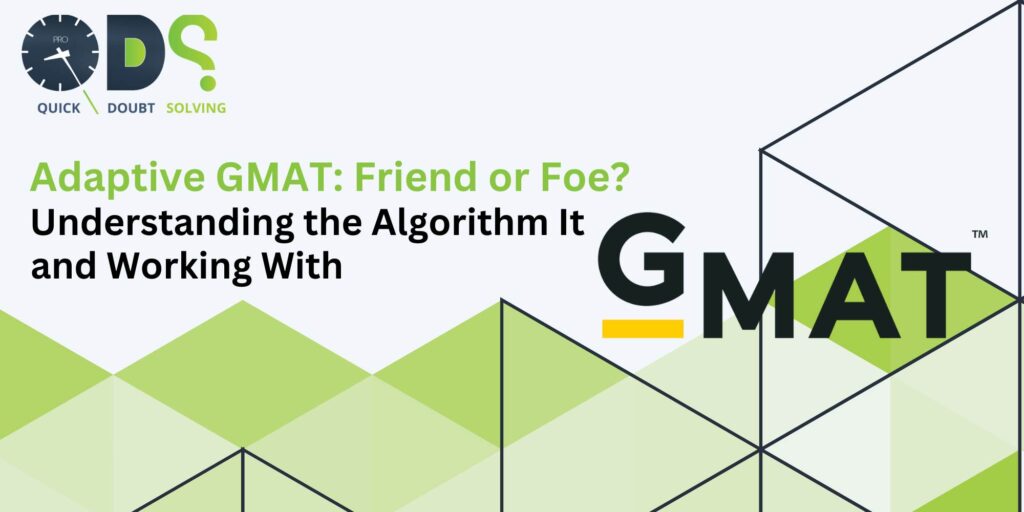The GMAT, which serves as a doorway to esteemed business schools, has changed significantly in the last several years. The era of the adaptive GMAT has arrived, ushering in a time when tests were static and linear. This computer-delivered monster promises a more effective and customized encounter by adjusting the question difficulty according to your performance. So is the adaptive GMAT an assist or a hindrance? Together, we will clarify the structure, comprehend the algorithm, and provide you with the tools you need to successfully traverse it and conquer its obstacles.

Demystifying the Adaptive Format:
Visualize yourself and the computer engaging in a lively dance. You respond to an inquiry. Based on your answer, the machine chooses the next question from a large pool of options; if you answered correctly, it will be harder; if not, it will be easy. This dance keeps on until you finish the analytical writing assessment, verbal, quantitative, and integrated reasoning parts. The objective? Determine your level of skill precisely within a predetermined score range (200-800).
Understanding the Algorithm and Working With GMAT:
Concealed inside its mystery, the GMAT’s adaptive engine makes use of an intricate statistical model known as Item Response Theory (IRT). IRT uses your answers to a few preliminary questions to evaluate your skill. This estimate determines the level of difficulty for each following question, resulting in a customized test route.
Working with the Adaptive GMAT:
- Embrace the Unpredictable:
You won’t have a predicted difficulty curve, in contrast to the previous GMAT. The questions will go from simple to hard and back again, so get ready for an exciting trip.
- Focus on Accuracy, Not Speed:
It is never a good idea to “game” the system by speeding through the questions. Because the system penalizes negligence, precision should take precedence over speed.
- Stay Calm:
Adaptive formatting might be intimidating. Panicking, however, will simply make you less intelligent. Breathe deeply, have faith in your preparation, and have an open mind as you answer each question.
- Don’t Dwell on Mistakes:
Proceed! It is a waste of time and emotional energy to obsess over a question that was overlooked. It’s already taken into account by the algorithm, which modifies your path accordingly.
- Review Your Performance:
Check your unofficial score report after the test. It gives you insightful information about your advantages and disadvantages, which will help you plan for your next endeavor.
Overcoming the Challenges:
- Mental Fatigue:
It might take mental effort to use the adaptive format. To keep energized throughout the test, take short pauses, get some fresh air outside, and perform some simple stretches.
- Performance Anxiety:
There might be a lot of pressure to do well. Use mindfulness exercises to control your worry and stay focused, such as deep breathing and meditation.
- Unfamiliar Question Types:
There might be unexpected questions in the adaptive format that you haven’t seen previously. Remain composed, use your analytical abilities, and rule out possible answers in a sensible manner.
Embracing the Adaptive GMAT Journey with QDS Pro
In conclusion, test takers will encounter both chances and obstacles with the adaptive GMAT due to its personalized evaluation strategy and dynamic algorithm. It becomes possible to comprehend the adaptable format, navigate it successfully, and overcome obstacles when you have QDS Pro by your side.
Through the use of QDS Pro’s insights, analytics, and adaptive learning capabilities, candidates may approach the GMAT with a sense of assurance and resolve. A resilient mentality, focused practice, and strategic planning are all necessary for success on the adaptive GMAT. Embrace the path to accomplishing your academic and professional goals with QDS Pro.



